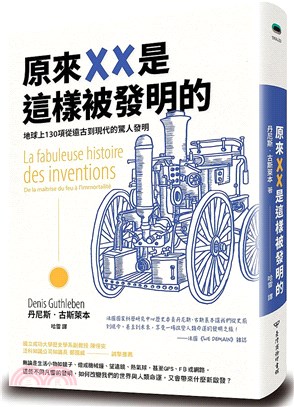Antitargets - Predicition And Prevention Of Drug Side Effects
商品資訊
ISBN13:9783527318216
出版社:John Wiley & Sons Inc
作者:Vaz
出版日:2008/01/23
裝訂/頁數:精裝/504頁
定價
:NT$ 12373 元優惠價
:90 折 11136 元
若需訂購本書,請電洽客服 02-25006600[分機130、131]。
商品簡介
作者簡介
目次
相關商品
商品簡介
This practice-oriented handbook surveys current knowledge on the prediction and prevention of adverse drug reactions related to off-target activity of small molecule drugs. It is unique in collating the current approaches into a single source, and includes several highly instructive case studies that may be used as guidelines on how to improve drug development projects.
With its large section on ADME-related effects, this is key knowledge for every drug developer.
With its large section on ADME-related effects, this is key knowledge for every drug developer.
作者簡介
Roy Vaz is the head of investigative pharmacokinetics at the Bridgewater, NJ (USA) location of Sanofi-Aventis Pharmaceuticals. He received his Ph.D. in Organic Chemistry from the University of Florida, Gainesville (USA), after graduating from the Indian Institute of Technology in Mumbai (India). Prior to his present appointment, he has worked with Bristol-Myers-Squibb and Tripos. He is a specialist on the prediction and modeling of cytochrome-mediated drug metabolism.
Thomas Klabunde obtained his PhD in chemistry from the University of M? (Germany). After a postdoctoral fellowship at the Texas A&M University, he was appointed Assistant Professor at the Institute for Bioscience and Technology in Houston (USA). Later on, he joined the pharmaceutical research of Sanofi-Aventis in Frankfurt (Germany), where he is currently a group leader. His main interest lies with drug design approaches for G protein-coupled receptors, notably in the areas of lead finding and chemogenomics.
Thomas Klabunde obtained his PhD in chemistry from the University of M? (Germany). After a postdoctoral fellowship at the Texas A&M University, he was appointed Assistant Professor at the Institute for Bioscience and Technology in Houston (USA). Later on, he joined the pharmaceutical research of Sanofi-Aventis in Frankfurt (Germany), where he is currently a group leader. His main interest lies with drug design approaches for G protein-coupled receptors, notably in the areas of lead finding and chemogenomics.
目次
List of Contributors.
Preface.
A Personal Foreword.
I General Aspects.
1 Why Drugs Fail – A Study on Side Effects in New Chemical Entities (Daniela Schuster, Christian Laggner, Thierry Langer).
1.1 Introduction.
1.2 Drugs Withdrawn from the Market between 1992 and 2006 Listed Alphabetically.
1.3 Borderline Cases.
1.4 Investigational Drugs That Failed in Clinical Phases from 1992 to 2002.
1.5 Strategies for Avoiding Failure.
1.6 An Unusual Case: The Revival of Thalidomide.
References.
2 Use of Broad Biological Profiling as a Relevant Descriptor to Describe and Differentiate Compounds: Structure–In Vitro (Pharmacology-ADME)–In Vivo (Safety) Relationships (Jonathan S. Mason, Jacques Migeon, Philippe Dupuis, Annie Otto-Bruc).
2.1 Introduction.
2.3 Structure–In Vitro Relationships.
2.4 Chemogenomic Analysis – Target–Target Relationships.
2.5 In Vitro–In Vivo Relationships – Placing Drug Candidates in the Context of BioPrint1.
2.6 A Perspective for the Future.
References.
II Antitargets: Ion Channels and GPCRs.
3 Pharmacological and Regulatory Aspects of QT Prolongation (Fabrizio De Ponti).
3.1 Introduction.
3.2 hERG: Target Versus Antitarget.
3.3 Pharmacology of QT Prolongation.
3.4 Significance of Drug-Induced QT Prolongation.
3.5 Regulatory Aspects of QT Prolongation.
3.6 Conclusions.
References.
4 hERG Channel Physiology and Drug-Binding Structure–Activity Relationships (Sarah Dalibalta, John S. Mitcheson).
4.1 Introduction.
4.2 hERG Channel Structure.
4.3 hERG Potassium Channels and the Cardiac Action Potential.
4.4 Mutations in hERG Are Associated with Cardiac Arrhythmias.
4.5 Acquired Long QT Syndrome.
4.6 Drug-Binding Site of hERG.
4.7 Structural Basis for hERG Block.
4.8 Alternative Mechanisms of Block.
4.9 Role of Inactivation in hERG Block.
4.10 Inhibition of hERG Trafficking by Pharmacological Agents.
4.11 Computational Approaches to Predict hERG Kþ Channel Block.
4.12 Conclusions.
References.
5 QSAR and Pharmacophores for Drugs Involved in hERG Blockage (Maurizio Recanatini, Andrea Cavalli).
5.1 Introduction.
5.2 Ligand-Based Models for hERG-Blocking Activity.
5.3 Ligand-Derived Models in the Light of the hERG Channel Structure.
5.4 Conclusions.
References.
6 GPCR Antitarget Modeling: Pharmacophore Models to Avoid GPCR-Mediated Side Effects (Thomas Klabunde, Andreas Evers).
6.1 Introduction: GPCRs as Antitargets.
6.2 In Silico Tools for GPCR Antitarget Modeling.
6.3 GPCR Antitarget Pharmacophore Modeling: The a1a Adrenergic Receptor.
6.4 Summary.
References.
7 The Emergence of Serotonin 5-HT2B Receptors as DRUG Antitargets (Vincent Setola, Bryan L. Roth).
7.1 Receptorome Screening to Identify Drug Targets and Antitargets.
7.2 Post-Receptorome Screening Data Implicate 5-HT2B Receptors in Drug-Induced VHD and PH.
7.3 Drug Structural Classes and VHD/PH.
7.4 Conclusions.
References.
8 Computational Modeling of Selective Pharmacophores at the a1-Adrenergic Receptors (Francesca Fanelli, Pier G. De Benedetti).
8.1 Introduction.
8.2 Ligand-Based and Receptor-Based Pharmacophore Modeling and QSAR Analysis.
8.3 The General 1-AR Pharmacophore.
8.4 Modeling the a1-AR Subtype Selectivities of Different Classes of Antagonists.
8.5 Antitarget Modeling of Biogenic Amine-Binding GPCRs: Common Features and Subtle Differences.
8.6 Conclusions.
8.7 Perspectives.
References.
III Antitargets: Cytochrome P450s and Transporters.
9 Cytochrome P450s: Drug–Drug Interactions (Dan Rock, Jan Wahlstrom, Larry Wienkers).
9.1 Introduction.
9.2 Reversible Inhibition.
9.3 Irreversible Inhibition.
9.4 Conclusion.
References.
10 Site of Metabolism Predictions: Facts and Experiences (Ismael Zamora).
10.1 Introduction.
10.2 Factors That Influence the Site of Metabolism Prediction by Cytochrome P450s.
10.3 Methods to Predict the Site of Metabolism.
10.4 The Influence of the Protein Structure on the Site of Metabolism.
10.5 Conclusions.
References.
11 Irreversible Cytochrome P450 Inhibition: Common Substructures and Implications for Drug Development (Sonia M. Poli).
11.1 Introduction.
11.2 Overview.
11.3 Structural Features Often Responsible for Mechanism-Based CYP Inhibition.
11.4 Conclusions.
References.
12 MetaSite: Understanding CYP Antitarget Modeling for Early Toxicity Detection (Yasmin Aristei, Gabriele Cruciani, Sergio Clementi, Emanuele Carosati, Riccardo Vianello, Paolo Benedetti).
12.1 Introduction.
12.2 The CYPs as Antitarget Enzymes.
12.3 The UGTs as Antitarget Enzymes.
12.4 The MetaSite Technology.
12.5 Conclusions.
12.6 Software Package.
References.
13 Orphan Nuclear Receptor PXR-Mediated Gene Regulation in Drug Metabolism and Endobiotic Homeostasis (Jie Zhou, Yonggong Zhai, Wen Xie).
13.1 Cloning and Initial Characterization of PXR.
13.2 PXR and Its Regulation of Drug-Metabolizing Enzymes and Transporters.
13.3 Crosstalk Between PXR and Other Nuclear Receptors.
13.4 Implications of PXR-Mediated Gene Regulation for Drug Metabolism and Pathophysiology.
13.5 Species Specificity of PXR and the Creation of "Humanized" Mice.
13.6 Conclusions.
References.
14 Ligand Features Essential for Cytochrome P450 Induction (Daniela Schuster, Theodora M.Steindl, Thierry Langer).
14.1 Introduction.
14.2 Molecular Mechanisms Leading to P450 Induction.
14.3 General Ligand Features Leading to NR Activation.
References.
15 Transporters and Drugs – An Overview (Hartmut Glaeser, Martin F. Fromm, Jörg König).
15.1 Introduction.
15.2 Organic Anion Transporting Polypeptides and Drug Transport.
15.3 Multidrug Resistance Proteins and Drug Transport.
15.4 Role of P-Glycoprotein for Drug Disposition.
15.5 Vectorial Drug Transport.
References.
16 Computational Models for P-Glycoprotein Substrates and Inhibitors (Patrizia Crivori).
16.1 P-Glycoprotein Structure, Expression, Mechanism of Transport and Role on Drug Pharmacokinetics.
16.2 In Vitro Models for Studying P-gp Interacting Compounds.
16.3 Computational Models for Predicting P-gp Interacting Compounds.
16.4 Computational Models for Other Important Drug Transporters.
16.5 Conclusions.
References.
IV Case Studies of Drug Optimization Against Antitargets.
17 Selective Dipeptidyl Peptidase IV Inhibitors for the Treatment of Type 2 Diabetes: The Discovery of JANUVIA2 (Sitagliptin) (Scott D. Edmondson, Dooseop Kim).
17.1 Introduction.
17.2 Selectivity of DPP-4 Inhibitors.
17.3 a-Amino Acid Amide Series.
17.4 Early b-Amino Acid Amide DPP-4 Inhibitors.
17.5 Conclusions.
References.
18 Strategy and Tactics for hERG Optimizations (Craig Jamieson, Elizabeth M. Moir, Zoran Rankovic, Grant Wishart).
18.1 Introduction.
18.2 Survey of Strategies Used to Diminish hERG.
18.3 Summary and Analysis.
References.
19 Structure-Based In Silico Driven Optimization: Discovery of the Selective 5-HT1A Agonist PRX-00023 (Oren M. Becker).
19.1 Introduction.
19.2 Structure-Based In Silico Driven Multidimensional Optimization Paradigm.
19.3 Clinical Candidate Selection Criteria.
19.4 Lead Identification.
19.5 Optimization Round 1: Reducing Off-Target Activities.
19.6 Optimization Round 2: Reducing Affinity to hERG.
19.7 Conclusion.
References.
Index
Preface.
A Personal Foreword.
I General Aspects.
1 Why Drugs Fail – A Study on Side Effects in New Chemical Entities (Daniela Schuster, Christian Laggner, Thierry Langer).
1.1 Introduction.
1.2 Drugs Withdrawn from the Market between 1992 and 2006 Listed Alphabetically.
1.3 Borderline Cases.
1.4 Investigational Drugs That Failed in Clinical Phases from 1992 to 2002.
1.5 Strategies for Avoiding Failure.
1.6 An Unusual Case: The Revival of Thalidomide.
References.
2 Use of Broad Biological Profiling as a Relevant Descriptor to Describe and Differentiate Compounds: Structure–In Vitro (Pharmacology-ADME)–In Vivo (Safety) Relationships (Jonathan S. Mason, Jacques Migeon, Philippe Dupuis, Annie Otto-Bruc).
2.1 Introduction.
2.3 Structure–In Vitro Relationships.
2.4 Chemogenomic Analysis – Target–Target Relationships.
2.5 In Vitro–In Vivo Relationships – Placing Drug Candidates in the Context of BioPrint1.
2.6 A Perspective for the Future.
References.
II Antitargets: Ion Channels and GPCRs.
3 Pharmacological and Regulatory Aspects of QT Prolongation (Fabrizio De Ponti).
3.1 Introduction.
3.2 hERG: Target Versus Antitarget.
3.3 Pharmacology of QT Prolongation.
3.4 Significance of Drug-Induced QT Prolongation.
3.5 Regulatory Aspects of QT Prolongation.
3.6 Conclusions.
References.
4 hERG Channel Physiology and Drug-Binding Structure–Activity Relationships (Sarah Dalibalta, John S. Mitcheson).
4.1 Introduction.
4.2 hERG Channel Structure.
4.3 hERG Potassium Channels and the Cardiac Action Potential.
4.4 Mutations in hERG Are Associated with Cardiac Arrhythmias.
4.5 Acquired Long QT Syndrome.
4.6 Drug-Binding Site of hERG.
4.7 Structural Basis for hERG Block.
4.8 Alternative Mechanisms of Block.
4.9 Role of Inactivation in hERG Block.
4.10 Inhibition of hERG Trafficking by Pharmacological Agents.
4.11 Computational Approaches to Predict hERG Kþ Channel Block.
4.12 Conclusions.
References.
5 QSAR and Pharmacophores for Drugs Involved in hERG Blockage (Maurizio Recanatini, Andrea Cavalli).
5.1 Introduction.
5.2 Ligand-Based Models for hERG-Blocking Activity.
5.3 Ligand-Derived Models in the Light of the hERG Channel Structure.
5.4 Conclusions.
References.
6 GPCR Antitarget Modeling: Pharmacophore Models to Avoid GPCR-Mediated Side Effects (Thomas Klabunde, Andreas Evers).
6.1 Introduction: GPCRs as Antitargets.
6.2 In Silico Tools for GPCR Antitarget Modeling.
6.3 GPCR Antitarget Pharmacophore Modeling: The a1a Adrenergic Receptor.
6.4 Summary.
References.
7 The Emergence of Serotonin 5-HT2B Receptors as DRUG Antitargets (Vincent Setola, Bryan L. Roth).
7.1 Receptorome Screening to Identify Drug Targets and Antitargets.
7.2 Post-Receptorome Screening Data Implicate 5-HT2B Receptors in Drug-Induced VHD and PH.
7.3 Drug Structural Classes and VHD/PH.
7.4 Conclusions.
References.
8 Computational Modeling of Selective Pharmacophores at the a1-Adrenergic Receptors (Francesca Fanelli, Pier G. De Benedetti).
8.1 Introduction.
8.2 Ligand-Based and Receptor-Based Pharmacophore Modeling and QSAR Analysis.
8.3 The General 1-AR Pharmacophore.
8.4 Modeling the a1-AR Subtype Selectivities of Different Classes of Antagonists.
8.5 Antitarget Modeling of Biogenic Amine-Binding GPCRs: Common Features and Subtle Differences.
8.6 Conclusions.
8.7 Perspectives.
References.
III Antitargets: Cytochrome P450s and Transporters.
9 Cytochrome P450s: Drug–Drug Interactions (Dan Rock, Jan Wahlstrom, Larry Wienkers).
9.1 Introduction.
9.2 Reversible Inhibition.
9.3 Irreversible Inhibition.
9.4 Conclusion.
References.
10 Site of Metabolism Predictions: Facts and Experiences (Ismael Zamora).
10.1 Introduction.
10.2 Factors That Influence the Site of Metabolism Prediction by Cytochrome P450s.
10.3 Methods to Predict the Site of Metabolism.
10.4 The Influence of the Protein Structure on the Site of Metabolism.
10.5 Conclusions.
References.
11 Irreversible Cytochrome P450 Inhibition: Common Substructures and Implications for Drug Development (Sonia M. Poli).
11.1 Introduction.
11.2 Overview.
11.3 Structural Features Often Responsible for Mechanism-Based CYP Inhibition.
11.4 Conclusions.
References.
12 MetaSite: Understanding CYP Antitarget Modeling for Early Toxicity Detection (Yasmin Aristei, Gabriele Cruciani, Sergio Clementi, Emanuele Carosati, Riccardo Vianello, Paolo Benedetti).
12.1 Introduction.
12.2 The CYPs as Antitarget Enzymes.
12.3 The UGTs as Antitarget Enzymes.
12.4 The MetaSite Technology.
12.5 Conclusions.
12.6 Software Package.
References.
13 Orphan Nuclear Receptor PXR-Mediated Gene Regulation in Drug Metabolism and Endobiotic Homeostasis (Jie Zhou, Yonggong Zhai, Wen Xie).
13.1 Cloning and Initial Characterization of PXR.
13.2 PXR and Its Regulation of Drug-Metabolizing Enzymes and Transporters.
13.3 Crosstalk Between PXR and Other Nuclear Receptors.
13.4 Implications of PXR-Mediated Gene Regulation for Drug Metabolism and Pathophysiology.
13.5 Species Specificity of PXR and the Creation of "Humanized" Mice.
13.6 Conclusions.
References.
14 Ligand Features Essential for Cytochrome P450 Induction (Daniela Schuster, Theodora M.Steindl, Thierry Langer).
14.1 Introduction.
14.2 Molecular Mechanisms Leading to P450 Induction.
14.3 General Ligand Features Leading to NR Activation.
References.
15 Transporters and Drugs – An Overview (Hartmut Glaeser, Martin F. Fromm, Jörg König).
15.1 Introduction.
15.2 Organic Anion Transporting Polypeptides and Drug Transport.
15.3 Multidrug Resistance Proteins and Drug Transport.
15.4 Role of P-Glycoprotein for Drug Disposition.
15.5 Vectorial Drug Transport.
References.
16 Computational Models for P-Glycoprotein Substrates and Inhibitors (Patrizia Crivori).
16.1 P-Glycoprotein Structure, Expression, Mechanism of Transport and Role on Drug Pharmacokinetics.
16.2 In Vitro Models for Studying P-gp Interacting Compounds.
16.3 Computational Models for Predicting P-gp Interacting Compounds.
16.4 Computational Models for Other Important Drug Transporters.
16.5 Conclusions.
References.
IV Case Studies of Drug Optimization Against Antitargets.
17 Selective Dipeptidyl Peptidase IV Inhibitors for the Treatment of Type 2 Diabetes: The Discovery of JANUVIA2 (Sitagliptin) (Scott D. Edmondson, Dooseop Kim).
17.1 Introduction.
17.2 Selectivity of DPP-4 Inhibitors.
17.3 a-Amino Acid Amide Series.
17.4 Early b-Amino Acid Amide DPP-4 Inhibitors.
17.5 Conclusions.
References.
18 Strategy and Tactics for hERG Optimizations (Craig Jamieson, Elizabeth M. Moir, Zoran Rankovic, Grant Wishart).
18.1 Introduction.
18.2 Survey of Strategies Used to Diminish hERG.
18.3 Summary and Analysis.
References.
19 Structure-Based In Silico Driven Optimization: Discovery of the Selective 5-HT1A Agonist PRX-00023 (Oren M. Becker).
19.1 Introduction.
19.2 Structure-Based In Silico Driven Multidimensional Optimization Paradigm.
19.3 Clinical Candidate Selection Criteria.
19.4 Lead Identification.
19.5 Optimization Round 1: Reducing Off-Target Activities.
19.6 Optimization Round 2: Reducing Affinity to hERG.
19.7 Conclusion.
References.
Index
主題書展
更多
主題書展
更多書展今日66折
您曾經瀏覽過的商品
購物須知
外文書商品之書封,為出版社提供之樣本。實際出貨商品,以出版社所提供之現有版本為主。部份書籍,因出版社供應狀況特殊,匯率將依實際狀況做調整。
無庫存之商品,在您完成訂單程序之後,將以空運的方式為你下單調貨。為了縮短等待的時間,建議您將外文書與其他商品分開下單,以獲得最快的取貨速度,平均調貨時間為1~2個月。
為了保護您的權益,「三民網路書店」提供會員七日商品鑑賞期(收到商品為起始日)。
若要辦理退貨,請在商品鑑賞期內寄回,且商品必須是全新狀態與完整包裝(商品、附件、發票、隨貨贈品等)否則恕不接受退貨。
























